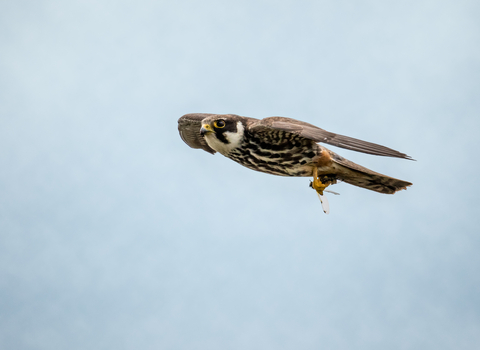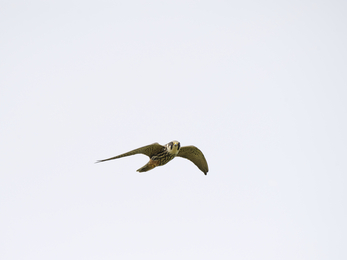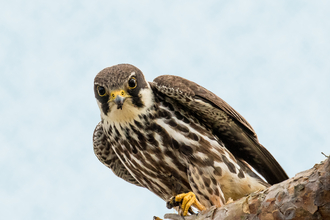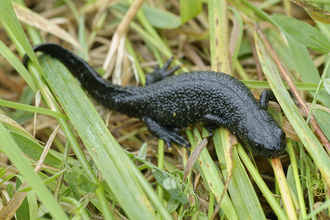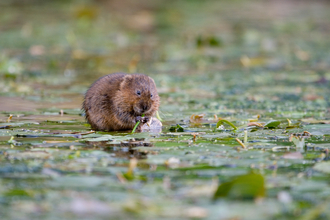Hobby
Late spring sees the return of the hobby. A sleek little falcon, the hobby is dark, slate-grey above, with a bold black moustache, white cheeks, streaky underparts, and a surprising pair of gingery red ‘pyjamas’. Having flown all the way from sub-Saharan Africa, this master of the air has one thing on its mind - food! The hobby's visit is perfectly timed to coincide with the emergence of large numbers of damselflies and dragonflies from gravel pits, lakes and reedbeds. With aerodynamic, swept-back wings and a narrow tail, the hobby is quick and agile, making snatching snacks from the sky seem effortless, even eating on the wing.
Springtime in a wetland is full of activity, with cuckoos calling, terns flicking over the open water, maybe a little egret hunting quietly in the shallows, or the ‘plop’ of a water vole in the nearby ditch
Find hobbies
The largest concentrations of hobbies can be found over extensive reedbeds in southern England, and there are few places better than Somerset Wildlife Trust’s Westhay Moor NNR where counts of 20 or more are certainly not uncommon.
- Hertfordshire, Tring Reservoirs
- Essex, Fingringhoe Wick
- Rutland, Rutland Water Egleton Reserve,
- Cambridgeshire, The Great Fen
- Yorkshire, Wheldrake Ings
- Suffolk, Hen Reedbeds
- Derbyshire, Willington Gravel Pits
- Surrey, Barossa and Poors Allotments
- Norfolk, Upton Broad and Marshes
How to do it
Bring a pair of binoculars and a packed lunch, and make a day of it. Try a sunny day when insects will be at their most active - more food for the hobbies! Things generally won’t get going until later in the day, when everything's warmed up enough for the dragonflies and damselflies, the hobby’s main food, to be flying around.
If you can't get there
Set your eyes to the skies over woodlands, wetlands, and heathland where hobbies might be hunting - they breed across much of Wales and Engalnd, including southern Scotland. To find out more about our most elegant of falcons, you could do worse than reading “The Hobby” by Anthony Chapman.
More wildlife experiences
From seeing colourful wildflowers to spotting magnificent birds of prey, we can help you get closer to wildlife across the UK.

